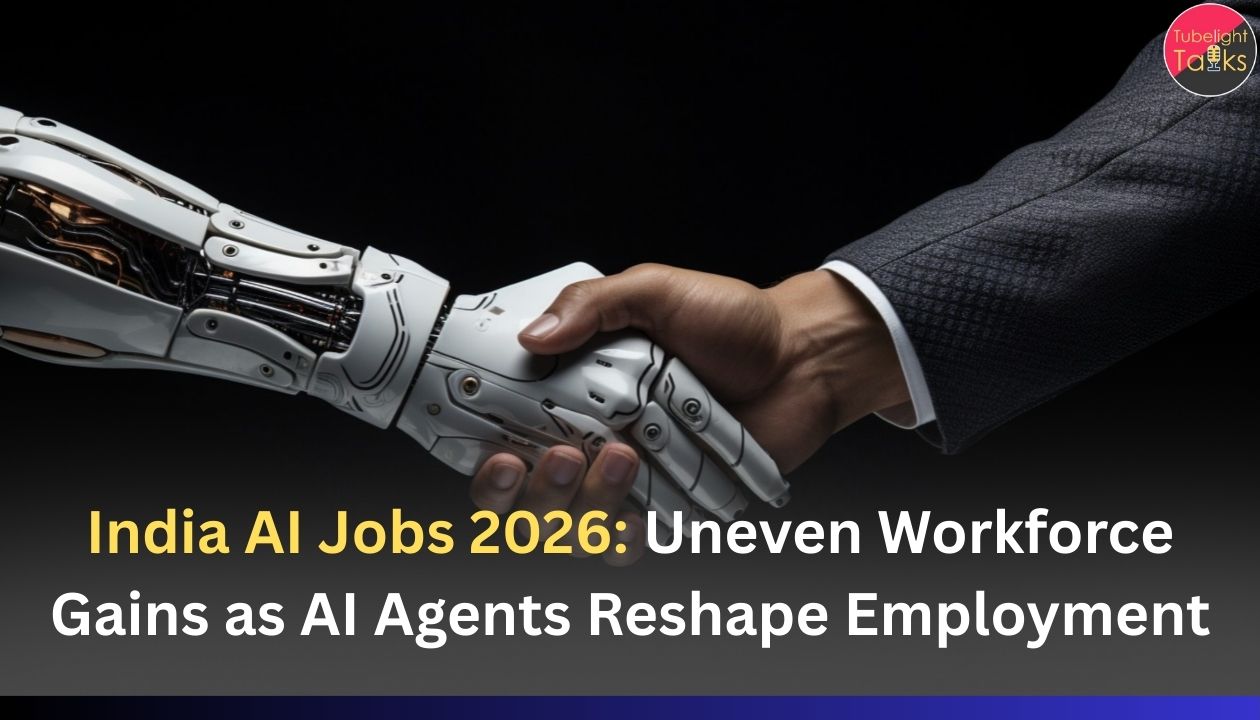India AI Jobs 2026 report reveals a nuanced landscape showcasing how artificial intelligence is reshaping the nation’s workforce. While AI agents are creating advanced technical roles and boosting productivity in IT, finance, and healthcare, the report also highlights widening disparities as routine and low-skilled workers face increased displacement risks.
These insights mirror global concerns reflected in worldwide AI forecasts predicting major labor disruptions this decade. India’s biggest challenge now is ensuring inclusive development through reskilling, upskilling, and workforce transition strategies so that AI’s benefits reach all sections of society.
Who Gained: The Skill-Biased Boost from AI
Technical Professionals and AI Specialists
Engineers, data scientists, software developers, and AI trainers stand as primary beneficiaries, experiencing robust demand driven by rapid AI adoption in product development, automation, and analytics. Their roles expanded to designing, training, and managing AI agents, leading to significant wage growth and job stability.
Sectoral Winners: IT, Finance, Healthcare
AI integration boosted digital transformation in banking through AI-driven fraud detection and personalized service, in healthcare via diagnostics and telemedicine enhancement, and in IT through intelligent automation. These sectors showed notable employment growth for skilled professionals adapting AI tools.
Who Was Left Behind: Displacement and Vulnerability
Routine Manual and Administrative Roles
Workers performing predictable, repetitive tasks in manufacturing, clerical work, and low-end services faced job displacement as AI agents and robotic process automation scaled. The report estimates millions of such jobs are at risk unless mitigation measures are introduced.
Informal Sector and Digital Divide
Large segments of India’s informal workforce with limited digital literacy and access to technology remain most vulnerable. Geographic and socio-economic disparities compound risks, leaving poor urban and rural communities with fewer opportunities to benefit from AI-driven job creation.
Global AI Predictions Align With Indian Realities
Broad Labor Market Disruptions Ahead
International organizations forecast substantial job market volatility by 2030 as AI technologies mature. The consensus warns that while new types of work will emerge, significant transitional unemployment and skill mismatch challenges must be addressed globally, including in India.
Roadmap for Job Creation in the AI Economy: PIB
Policy Imperatives
Recommendations include aggressive investments in reskilling, digital inclusion, social safety nets, and promoting AI applications that augment rather than replace human labor. India’s policy frameworks now increasingly reflect these priorities.
Adapting to Technological Change With Wisdom and Compassion
In adopting revolutionary technologies like AI, Sant Rampal Ji Maharaj’s Satgyan teaches the importance of truth, empathy, and ethical responsibility. Satgyan’s wisdom encourages leaders and workers to embrace change with awareness, ensuring technological progress benefits all and reduces suffering.
The path of righteousness as espoused by Satgyan calls for compassionate inclusion of the vulnerable and safeguarding human dignity amid rapid digital transformations, emphasizing sustainable and equitable growth.
Key Facts
- AI agents contributed significantly to job growth for India’s tech and healthcare professionals in 2026.
- Millions of low-skilled routine jobs remain vulnerable to AI-driven automation and displacement.
- Informal sector workers are disproportionately at risk due to digital access gaps.
- Global forecasts predict AI will disrupt labor markets worldwide, necessitating urgent policy action.
- India is actively scaling reskilling and digital literacy programs to ease workforce transition.
Expert Assessments on AI’s Labor Market Impact
Labor Economists
Analysts highlight AI as a skill-biased technology that boosts productivity for high-skill roles but threatens routine jobs without adaptation.
Sociologists and Policy Experts
They caution that without proactive inclusivity policies, AI could exacerbate inequality and social unrest, underscoring the need for comprehensive social protections.
Outlook: Balancing Innovation With Inclusive Employment
Emphasizing Reskilling and Lifelong Learning
India’s focus on education and vocational training remains critical to shift vulnerable workers into emerging job sectors complemented by AI.
Encouraging Human-AI Collaboration
Promoting AI tools that enhance human capabilities rather than replace them will be vital to creating sustainable jobs and preserving dignity.
Also Read: India IT-BPM Industry 2026: Rising Toward a Global AI Product Powerhouse
FAQs: India AI Jobs 2026
1. Who gained most from AI in India?
Highly skilled tech and healthcare workers.
2. Which jobs are most at risk?
Routine and manual roles with repetitive tasks.
3. How does India plan to mitigate displacement?
Through reskilling, digital literacy, and social safety programs.
4. Are informal workers benefiting?
Mostly no, due to technology access and skill gaps.
5. What is the global outlook on AI and jobs?
Expect widespread disruption and the need for policy-driven adaptation.
This report is based on the latest labor market analyses, government labor force data, and global AI impact predictions to present a comprehensive view of AI’s nuanced effects on India’s workforce in 2026.










